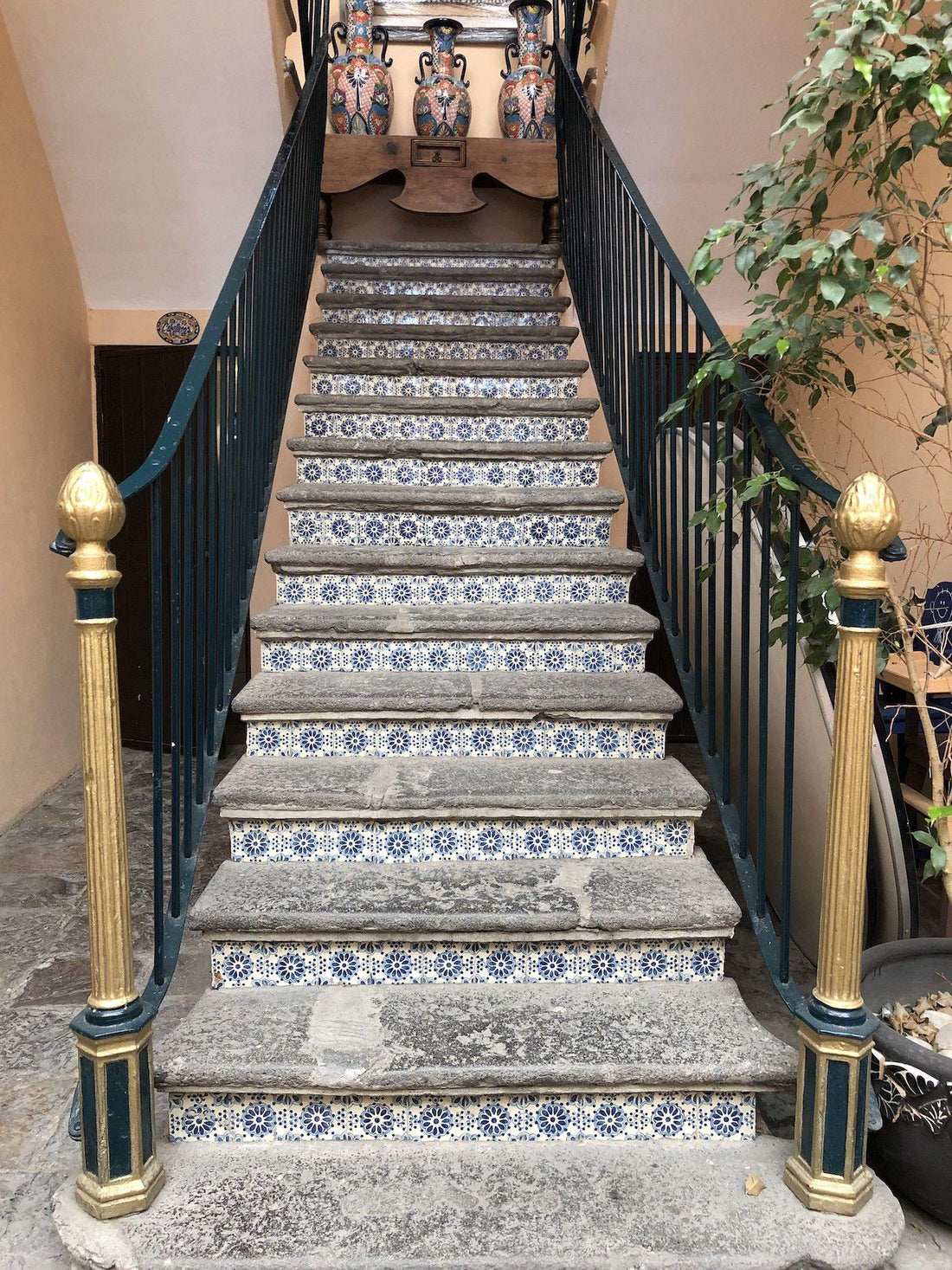
Let’s Talk Talavera Tile: History and Design
Share
Talavera tile is rich in both history and color and design. With a backstory rooted deep in Colonial Mexico, Talavera tiles feature an array of patterns and vibrant colors.
What is Talavera?
A Quick Historical Overview
We in the U.S. associate Talavera tile with Mexico, but did you know that Talavera originated in medieval Iberia and was inspired by an Islamic aesthetic?
In Spanish, tile translates to “azulejo”, which derives from the Arabic word for “faience, ornamental tile”: زايج. Moroccan zellige tile, also comes from this word. Talavera tile’s namesake is the Spanish city of Talavera de la Reina in Central Spain. This town produced the majority of glazed tile and pottery in Iberia in the 16th and 17th centuries.

Under Muslim rule, glazing techniques and patterns became popular in Iberia (today’s Spain and Portugal). Islamic Art was then part of everyday life. Through the Reconquista, Spaniards adopted tile making techniques and later brought those to the Americas. The “New World” hub of Talavera pottery was Puebla, a city founded shortly after the arrival of the colonizers. Still today, we associate the beautifully ornate, and often blue and white Talavera Poblana with this city and its rich colonial history.

The popularity of patterns quickly spread across all Mexico.Consequently, other regions began crafting handmade, glazed decorative tile. As a result, Talavera style is deeply ingrained in Mexican Design and Architecture.

The Rosewood Hotel 
All is adorned 
Street views 
Hotel Amparo by Red Riding Hood Productions.
Today’s main hub for talavera tile and pottery making is the small town of Dolores Hidalgo, just outside of San Miguel de Allende, Guanajuato. In a nutshell, Talavera blends characteristics of Islamic art, Spanish tradition, and uses materials native to central Mexico.
How is Clay Imports Talavera tile made?
Skilled artisans handcraft each of our Talavera tiles in Dolores Hidalgo. We use a mix of regional red clay. The most traditional form of a Talavera tile is a square. Artisans, either hand cut or extrude clay to size and fire the the bodies. Following the production of the bodies, artisan glaze the tile by adding decorative patterns through stenciling or screen printing. Afterwards, they fire the now colored pieces in a kiln.

In addition to traditional Talavera tile, we also offer textures relief tiles. Islamic Cuerda Seca technique inspired these products. Cuerda seca translates to “dry cord” and was probably first developed in the second half of the 14th century in Central Asia and Iran. The production of this ornate tile is the most time and labor-intensive of all of our offerings. The reason is that artisans meticulously sketch and hand paint each intricate design. The hand-crafting process of fabricating a relief tile may take upwards of 20 times longer than a solid color tile!
What are the characteristics of Talavera tile?
Each piece is handmade. As a result, Talavera tile features natural variations and imperfections in each piece adding to its uniqueness. A beloved characteristic of Talavera tile is light crazing over time, which adds even more energy to this material. Square Talavera tiles measure approximately 4”x4” or 6”x6” with an approximate ¼” thickness.

Talavera Fiesta 
Colorwise, bright and vibrant is the norm, intensified by a high gloss finish. The texture of a Talavera tile is usually smooth, though we offer a variety of stunning Relief Tiles.

Relief Adonte 
Why is Talavera Tile important to Clay Imports?
Calling Texas and Mexico home, Talavera tile has been a staple of our offerings since the beginning. Our tile travels, which are taking us mostly to Mexico, but also the Middle East, contribute to our deep appreciation of pattern, techniques and history that every tile we make bears. For these reasons, we treat our tiles with somewhat of a reverence for the artists. For us, each individual tile is a work of art.
Where can you install Talavera tile?
You can install this tile in a variety of interior and exterior applications, as long as the tile is not exposed to extreme freezing. They are also suitable for commercial use in restaurants or bars. Talavera tile is functional, and beautiful and adds much character to any space. Furthermore, it is easy to care and maintain.




